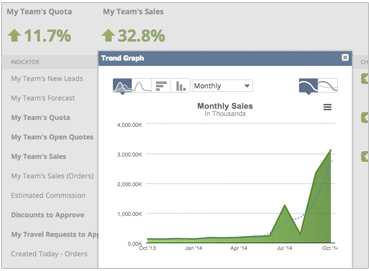Product Features
For Wholesale Distribution
Home / Sell
Menu
Sell
Build a World-Class Sales Effort
How do you manage leads and new contacts?
How do you maintain control around your pricing options?
NetSuite drives efficiency and visibility through the sales process, helping you build a sales effort that’s second to none.
Opportunity Management
- Maximize your existing sales force.
- Route and track new leads automatically.
- Maintain visibility into your pipeline.
- Analyze productivity in real time.
Pricing Flexibility
- Develop flexible pricing schemes.
- Update pricing as needed.
- Offer promotions and track results.
- Segment pricing by customer, offer quantity discounts, and more.

Business Impact
Revenue Forecasts
Know what’s coming and adapt more quickly.
Sales Efficiency
Increase revenue without adding headcount.
Pipeline Management
Monitor productivity at every step.





























